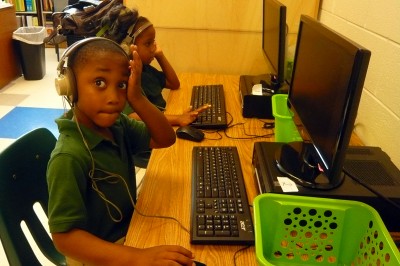Will technology improve teacher-student relationships, or hurt them?
 School districts from the sprawling Los Angeles Unified to the tiny Nome Public Schools in Alaska have embraced technology in the classroom based on the promise that it can improve learning by increasing student engagement.
School districts from the sprawling Los Angeles Unified to the tiny Nome Public Schools in Alaska have embraced technology in the classroom based on the promise that it can improve learning by increasing student engagement.A game which allows students to use a virtual scalpel to prod and poke muscles and blood vessels in the human body, for instance, is likely to be more attractive to a ninth grade biology class than an anatomy lecture.
Couple such a game with an instant feedback mechanism that provides real-time data on the student’s performance and that’s further enticement to schools to bring more devices into the classroom. Proponents of such individualized instruction say the technology allows teachers to assess how their students are doing in class more accurately, showing teachers how to help students in a more targeted fashion.
But is expanding access to iPad, laptop, and smart phone screens in school taking away from human interaction between teachers and students? And does it actually lead to more learning?
We don’t know the answer to these questions just yet. Greg Anrig, author of Beyond the Education Wars: Evidence That Collaboration Builds Effective Schoolspublished last spring, says there is
